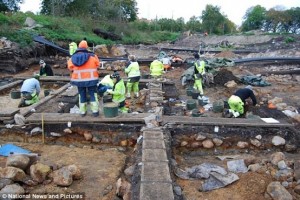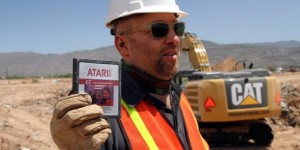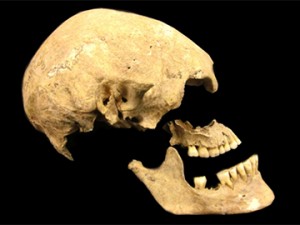Archaeologists uncover information about homeless people and immigrants based on their material culture. Their discoveries contradict popular beliefs about these groups of people. Many might not consider that homeless people have a desire to learn and think critically, but that is exactly what archaeologists discovered. The short documentary, Inocente, follows a 15-year-old homeless girl in San Diego, California. The girl, Inocente, attends school and dedicates herself to her art. Her ambition, dedication, and independence appear throughout the film, disproving stereotypes about homeless children. Like archaeology, film shows the reality of homelessness and immigration.
Author Archives: jielkin
Bring Back the Artifacts: Artifacts Returned to Peru from U.S. Museum
For four years, the Burke Museum of Natural History worked with the Peruvian government to identify objects such as human remains, ceramic vessels and bowls, a collection of dolls, necklaces, and textiles. On November 5, the Peruvian Consul General attended a gathering for the final exhibition of the items; and the following week, the items were packed up and transported to Peru. Those items were identified for repatriation under a UNESCO Convention on the Means of Prohibiting and Preventing the Illicit Import, Export, and Transfer of Ownership of Cultural Property. The convention permits government to designate meaningful objects of cultural heritage and protect them from leaving the country from which they originated. This repatriation shows that the museum is fulfilling the ethical responsibilities that come with having excavated artifacts. The UNESCO convention supports the idea that the identity of people is linked to the past, which people learn about from artifacts. Thus, the countries that use the UNESCO convention to repatriate artifacts can reclaim information from their past.

Figure 1- A ceramic vessel collected from Mochica, Peru, is one of the objects returned to the Peruvian government.
Dr. Peter Lape, associate director of research and curator of archaeology at the Burke Museum, said, “We are glad to help send these collections to Peru.” The artifacts were flown by the United States Air Force to the Peruvian Air Force base in Lima, Peru. Two officers from the Peruvian Ministry of Foreign Relations took the objects and transferred them to the Ministry of Culture for further preservation. The positive attitude from Dr. Lape and the level of involvement for transportation indicate the importance of repatriation and the power that the UNESCO convention holds.
The museum was prompted to examine their Peruvian collections by a different ruling concerning the handling of Native American cultural items for federal agencies or institutions that receive federal funding. The ruling led the museum to re-inventory all of their human remains and they found three sets of Peruvian remains. Laura Phillip, the museum’s archaeology collections manager, said, “So, it’s sort of in the spirit of that law [Native American Graves Protection and Repatriation Act of 1990], we talked to the Peruvian government and said ‘Would you be interested in these individuals?’ And they said yes.” So, the legislation regarding archaeology and artifacts has the potential to stimulate further discussion of repatriation. Existing legislation combined with ethical standards of archaeologists and museums foster a system for dealing with artifacts that is respectful to the people who consider the artifacts as parts of their past.
Sources:
http://www.archaeology.org/news/2699-141111-peru-artifacts-returned
http://dailyuw.com/archive/2014/11/09/news/burke-museum-return-artifacts-peruvian-government#.VGldNFYvTwJ
Sabloff, Jeremy A. “Chapter Five: Why Cities?” Archaeology Matters: Action Archaeology in the Modern World. Walnut Creek, CA: Left Coast, 2008. 71-72. Print.
Figure 1: http://www.archaeology.org/news/2699-141111-peru-artifacts-returned
Figure 2: http://dailyuw.com/archive/2014/11/09/news/burke-museum-return-artifacts-peruvian-government#.VGldNFYvTwJ
Further Reading:
http://www.burkemuseum.org/info/press_browse/peruvian_collections_going_home
http://www.peruthisweek.com/news-peruvian-artifacts-to-be-returned-from-seattle-w-museum-104450
Punk Archaeology- Not Just for Punks
When one thinks about archaeology, the mind drifts towards ancient ruins and discoveries connected to lesser-known cultures. Hunting for infamously terrible Atari games in a trash dump in New Mexico sounds unconventional. This example of punk archaeology uses artifacts to learn about human behavior– as do other examples of archaeology. But this case of punk archaeology challenges societal norms that people take for granted. It pushes against 21st century capitalism by exposing a corporation’s reaction to its own mistake. For this reason, punk archaeology proves its relevance for today’s society. Punk archaeologists hypothetically could hold corporations accountable for their actions by sharing their findings with the public.
In addition to exploring the actions of a corporation, punk archaeology calls into question the established modes of thought of what archaeology should uncover. The team of punk archaeologists searched for something common and not ‘over-hyped’. While ‘over-hyped’ is an arguably inappropriate description for artifacts from the Mayan civilization, the punks have a point. Within the field of archaeology, people know that artifacts can be common items (even available for purchase online at a low price). However, the majority of the public would not guess that. Punk archaeology succeeds in challenging the masses’ ideas about archaeology, rather than the structure and function of archaeology.
Who is archaeology for? Here is a question that punk archaeologists answer in a unique way. While the team in New Mexico had a number of goals, they recognized that the dig would primarily serve as ‘entertainment for gamers and geeks’. Punk archaeology reaches out to groups that would normally have little interest in the field and findings of archeology. Also, most archaeological processes and findings are not captured in a documentary like this one was. With a documentary rather than an article published in an archaeology journal, the information from this excavation appeals to a potentially different and broader audience.
These punk archaeologists used the dig to consider America’s fascination with success and the underdog- two themes that are often associated with the punk aesthetic. By examining these ‘punk ideas’, punk archaeology presents a new take on how archaeology helps, influences, and connects to contemporary society. Punk archaeology alters the mainstream reputation and perception of archaeology in a way that maintains the traditional processes of archaeology. Time will tell to see if this trend catches on and can continue to present new ways of thinking about archaeology that will attract a wide audience.
Resource: http://www.theatlantic.com/technology/archive/2014/08/why-we-dug-atari/375702/
Figure 1: http://www.anthropology-news.org/index.php/2014/05/01/punk-archaeology-and-excavating-video-games-in-new-mexico/
Figure 2: http://www.dayofarchaeology.com/tag/punk/
Additional reading: http://www.ign.com/articles/2014/04/26/the-dig-uncovering-the-atari-et-games-buried-in-new-mexico-desert
http://www.cnet.com/news/success-atari-e-t-games-found-in-new-mexico-dump/
Who Did Europeans Descend From? A Third Group Comes to Light
For many years, we believed that Europeans descended from early farmers, who were originally in the Middle East and moved to Europe about 7,500 years ago, or from local hunter-gatherers that bred with other races. However, recent DNA analysis uncovers a third group.
Nine ancient skeletons found in Sweden, Germany, and Luxemburg were of seven hunter-gathers and one hunter who lived 8,000 years ago and one farmer who lived 7,000 years ago. Through association, the hunter-gatherers were labeled as hunter-gatherers and identified as being from the same time period. Hunter-gatherers had darker skin than farmers and typically blue eyes, while farmers had fair to pale skin tones.
The skeletal remains were dated with AMS radiocarbon dating, a method applied to organic matter based on carbon decay. AMS radiocarbon dating uses an accelerator mass spectrometer to differentiate the carbon isotopes from other atoms or molecules that have a similar mass. A danger of radiocarbon dating is that samples can be contaminated, which causes problems with the interpretation of the results. Therefore, the archaeologists used numerous approaches to search for contamination.

Figure 1: Archaeologists from Harvard Medical School collect genetic data from ancient skeletons in Sweden.
The team from the Harvard Medical School and Germany’s University of Tübingen noted a significant genetic transition between the era of hunter-gatherers and the era of the farmers. Thus, North Eurasians contributed to the gene pool in both Europe and North America. After overlaying the genomes with genetic codes from 2,300 present-day people living all over the world, the team concluded that the ancient North Eurasian ancestry is predominant in less than 20 percent of most Europeans’ DNA today. This ancestry is found in nearly every European group, the Caucasus, and the Near East. Northern Europeans have relatively more hunter-gather ancestry than southern Europeans who have more farmer ancestry. Most native Europeans have a mixture of genetic information from the three distinct types of ancestors. Most of the conclusions about the North Eurasian group come from DNA dating and analysis. Concerning the determination of dates, context is extremely important. Therefore, demographic history and inbreeding were accounted for during the process. The researchers focused on sex determination through Y-chromosome analysis. Other methods involved in their DNA dating were enrichment of mitochondrial DNA and shotgun sequencing, which sequences long strands of DNA.
Also, the ancient North Eurasian group explains the genetic connection between Europeans and Native Americans. Remains of ancient Siberians showed that European contributors were from the group that crossed the Bering Straight into the Americas more than 15,000 years ago. This new discovery alters our knowledge about European genetic ancestry and paints a different portrait of modern Europeans’ genetic composition.
Sources:
http://www.archaeology.org/news/2525-140918-european-genetic-ancestry
http://news.discovery.com/human/dna-places-third-group-in-european-descendent-mix-140918.htm
Renfrew, Colin and Paul Bahn (2010) Archaeology Essentials. 2nd edition. Thames & Hudson, New York. Chapter 2.
Figure 1: http://www.archaeology.org/news/2525-140918-european-genetic-ancestry
Further Reading:
http://hms.harvard.edu/news/new-branch-added-european-family-tree
http://www.nature.com/nature/journal/v513/n7518/full/nature13673.html#methods




